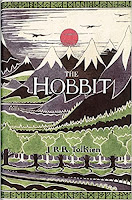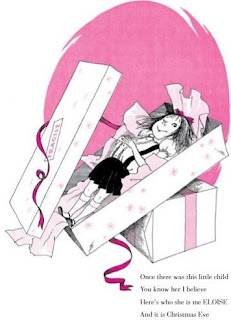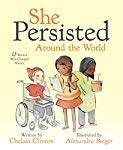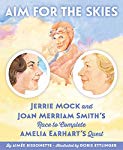Welcome!
Wednesday, January 12, 2022
Appreciate a Dragon with a review of A Dragon's Guide to the Care and Feeding of Humans
Monday, January 10, 2022
Classic Book Monday with a review of The Reluctant Dragon
Fiction
For ages 7 and up
Holiday House, 2020, 978-0823447251
Once day a shepherd comes back from his work tending his sheep in a real state. It would appear that there is a dragon living in a cave on the Downs, and everyone knows that dragons and sheep just don’t mix. Luckily for everyone, the shepherd’s son is a scholarly young fellow and he announces that he - knowing more about dragons than everyone else - will take care of the scaly problem.
The boy and the dragon soon strike up a pleasant acquaintance and the boy soon learns that the dragon is a "lazy beast" who is not in the slightest bit interested in fighting knights or eating maidens. He is quite happy to rest quietly, write sonnets, and mind his own business. The problem is that the dragon simply cannot seem to grasp the idea that people have a terrible preconceived notions about dragons. What on earth is the boy to do with this reluctant dragon who won’t fight to protect himself when Saint George, of dragon slaying fame, comes to town?
Using the rich language that he is famous for, Kenneth Grahame takes us back to time when dragons were a part of everyday living and when little boys could indeed have wonderful adventures. The characters, many of whom have a touch of the South Downs accent in their 'voices,' are charming, funny, and often surprising. Ernest H. Shepard, whose drawings of Pooh are beloved by so many, has superbly captured the essence of the story in his artwork. Sophie Blackall, whose own books have won numerous awards, has written a foreword for this special anniversary edition.
All in all this is a book to treasure for years to come, and it would make an excellent addition to a collection of classic children’s literature.
Friday, January 7, 2022
Ways of seeing - With a review of A Stone Sat Still
Wednesday, January 5, 2022
Times of hardship with a review of Ida B... and her plans to Maximize fun, avoid disaster and (Possibly) save the world
Ida B... and her plans to Maximize fun, avoid disaster and (Possibly) save the world Katherine Hannigan
Fiction
For ages 9 and up
HarperCollins, 2011, 978-0060730260
Ida B is an extremely happy nine-year-old. Her parents have the good sense not to send her to a school which she hates. Instead, she is homeschooled and she loves it. She loves living on the farm with her Mama and her Daddy, and she loves her conversations with the apple trees in the orchard, and her talks with the burbling stream. She loves the games that she plays with herself, and the walks that she takes with Daddy in the evenings. Everything is "righter than right."
Then one day the apple trees warn her that hard times are coming. Ida does not want to believe them. What could possibly go wrong with her perfect life? What happens is that Mama gets cancer and everything changes. First of all Mama is sick all the time and so she cannot give Ida B the attention she is used to having. Then Daddy has to sell some of their land to pay for Mama's medical bills. Ida B is appalled. How can Daddy sell some of their beloved orchard and let strangers cut down some of her trees? Then, to top it off, Daddy tells her that she has to go to school, neither he nor Mama are in a position to homeschool her. Ida B feels completely betrayed and she decides there and then that she is never going to allow herself to trust or to love anyone again.
Monday, January 3, 2022
The January Bookish Calendar and Classic Book Monday with a review of The Hobbit
Dear Bookish Friends,
Happy New Year! Another uncertain year lies ahead of us, but one thing that we can be certain of is that there is a wealth of good books out there for ourselves and for the children in our lives. Thank goodness for that!
First of all, as it is the beginning of the month, I would like to direct you to the January Bookish Calendar. Here you will find a calendar on which are noted the birthdays of famous people. Many of these notations have links to books about the people in question. Special days, such as Appreciate a Dragon Day (January 16th), are also on the calendar. As I have a deep fondness for dragons, I shall be sharing several dragon books with you this month.
You will see on this calendar that January the 3rd is J.R.R. Tolkien's birthday. There is a link on the calendar to reviews of books about the author. Thank you, dear man, for your stories, the worlds that you created, and your marvelous characters. In honor of his birthday I bring you a review of The Hobbit on this Classic Book Monday.
What many of you might not know is that Tolkien was an accomplished artist. The image at the top of this page is one of the pieces that he created for The Hobbit. There is a marvelous book, The art of the Hobbit that was published in 2012 in which his art for this book is showcased. I shall be buying a copy of this book for myself today!
J.R.R. Tolkien
Fiction
For ages 10 and up
Houghton Mifflin Harcourt, 2012, 978-0547928227
Bilbo Baggins is very happy with his quiet life in his comfortable hobbit hole under the hill. Meals areoften, abundant, and predictable, and everything is as it should be. He is therefore very discombobulated when Gandalf the wizard appears on his doorstep one day, and he tries to get rid of the disturbing old man as quickly as possible. He is even more horrified when thirteen dwarves and Gandalf arrive for tea the very next day. It would appear that they want Bilbo to join them on an adventure. The dwarves want to get back the treasure that Smaug the dragon stole from them, and they want to hire Bilbo to help them; he will be their "burglar." Bilbo very much wants to refuse this offer, and yet for some confusing reason this fails to happen. Before he quite knows what is happening, Bilbo is riding on a pony, heading off on an adventure which may very well be his undoing.
As it happens, the dwarves are very lucky that they took Bilbo with them for he saves their lives several times over. Not only is he quick thinking and brave, but he also finds a ring of invisibility, which makes it possible for him to do all kinds of remarkable things.
In the end, quiet little Mr. Baggins does indeed fulfill his role as the expedition's burglar. In the process he becomes very fond of a side of himself that he otherwise would never have discovered; he learns that he is able to out-riddle an evil little cave-dwelling monster; he can fight huge spiders; he figures out how to rescue his friends from captivity; and he even talks to a huge dragon. It would appear that Bilbo is more than just an unassuming little hobbit who likes to have his meals on time. That other side of his character helps him rise to challenges that would fell many, and he thus earns the respect and admiration of elves, dwarves, and men alike.
This is a tale that has truly stood the test of time, and it has delighted readers of all ages since its publication in 1937. Tolkien is without a doubt one of the greatest fantasy writers of all time.
Saturday, January 1, 2022
Tuesday, December 28, 2021
Let's Celebrate Chocolate!
Friday, December 24, 2021
Thursday, December 23, 2021
Eloise - One of my favorite book characters
In 1958 Eloise in Christmastime was published and once again we see how Eloise manages to drive everyone around her to distraction, and leave chaos in her wake. At the same time, she is oh so loveable and this festive book is a treat.
Wednesday, December 22, 2021
A time for giving and wishing - And a review of Wish
Tuesday, December 21, 2021
Happy Winter Solstice - And a review of Almost a Full Moon
Monday, December 20, 2021
Friends are the best gifts - And a review of Bear Gives Thanks
Thursday, December 16, 2021
A time to reflect, and a review of Thankful by Elaine Vickers and Samantha Cotterill
Tuesday, December 14, 2021
Contest for the 2022 Key Colors Illustrator Awards
Monday, December 13, 2021
News about Through The Looking Glass and a review of Hush Hush, Forest.
 |
| A block print from Hush Hush, Forest |
Dear Friends,
This blog is where new reviews, features, articles, interviews, giveaways, biographies, and contest information will be found. All the reviews, biographies, and features that are posted here will be put in the library of the TTLG website as well.
I am really looking forward to this new chapter in my life. It will be exciting to spend more time reading and writing and less time filling in backstage data forms!
We had a rather warm and dry October and November, and though the leaves on the trees changed color, autumn seemed to be decidedly uninterested in performing as it should. In the last few days
we have had blessed rain, and the mountains are dusted with snow. I love seeing one season shift into another, and I can now feel that winter is just around the corner.
 Hush Hush,
Forest
Hush Hush,
ForestMary Casanova
Illustrated by Nick Wroblewski
Picture Book
For ages 5 and up
University of Minnesota Press, 2018, 978-0-8166-9425-9
As two children snuggle under blankets to read a book, golden leaves drift down from the trees that stand outside, fluttering past their windows. The days shorten and soon we see the wild animals of the woods preparing for the cold that is coming.
The loons sing their last song and then take to the sky. The beavers gnaw through tree trunks until aspens fall down; they will be used to build a lodge. Raccoons get busy eating as much as they grow fat and their “pelt grows thick.”
Like “wisps of fire” the northern lights flicker across the sky. Dancing ribbons in blue, green, yellow, and pink dazzle those who see them.
With evocative and lyrical word pictures, and beautiful woodcuts, the creators of this book bring readers a spectacular picture of the changing seasons as they are unfold in the north woods in North America. We hear voices and the swish and hum of wings. We can almost smell the snow falling. This book is a treat for all the senses.
Thursday, April 8, 2021
In honor of National Library Week, a review of I Believe in Unicorns.
When I review a book that really touches me, I keep it and put it on my 'favorites' book shelf. Most of Michael Murpurgo's books are there. His book War Horse was turned into a film and a play.
I believe in Unicorns
Michael Morpurgo
Illustrator: Gary Blythe
Fiction
For ages 7 to 10
Candlewick Press, 2005, 978-0763630508
Tomas is eight years old and more than anything he loves to roam the countryside having adventures and helping his father tend the beehives. He hates having to go to school and he despises books and stories. Books and stories belong in the school room and they certainly aren't any fun. So when his mother makes him go to the story hour at the library, Tomas is very annoyed and not in the least bit interested in listening to the librarian tell her stories.
Tomas only has to listen to a little bit of the library lady's first story and he is completely entranced by her words. She sits on a lovely wooden unicorn reading to the children and telling them stories that she has made up. She tells them about her father who long ago, during a war, did his best to prevent evil people from burning books. Tomas finally begins to see that books are more than just pages of words and that they have a great deal to offer everyone, even him.
When war arrives in Tomas' own peaceful valley Tomas and all the people in his village are suddenly faced with a terrible calamity - their library is set on fire by a falling bomb. Something has to be done to save the books and their beloved wooden unicorn. Soon everyone, even the children, are working hard to save the most valuable thing in the village.
Many of us take books for granted, forgetting the many hours of pleasure that they have given us. In this book Michael Morpurgo reminds us that books and libraries are a treasure which should be fought for and defended. No one should be allowed to take away our books, for without our stories, poems, histories, biographies and scientific accounts our lives would be very empty indeed.
Monday, April 5, 2021
The April Bookish Calendar and National Library Week
 |
| by Chris Dunn. www.chris-dunn.co.uk |
Thursday, April 1, 2021
Memories of spring and a review of: Beautiful Eggs: A journey through decorative traditions from around the world
Illustrated by Alice Lindstrom
Nonfiction Board Book
For ages 4 to 6
Scribble, 2021, 978-1-95035-4436
When we think of egg decorating, we usually think of Easter festivities. Many people in countries around the world decorate boiled or blown eggs for this spring celebration. However, in some cultures they decorate eggs for other celebrations. In Mexico pretty eggs also appear on Cinco de Mayo and other festive days.
People have been decorating eggs for centuries, and they have developed all kinds of ways of making eggs beautiful. A great deal of time and effort can be spent on decorating eggs, and some of these creations are so prized that they are put in museums or art galleries.
In the Ukraine they have been creating extremely colorful eggs that are covered with fine and delicate designs for a long time. Red and green dyes are commonly used, and the designs are drawn on using beeswax.
In the Czech Republic Easter eggs are decorated using many dye colors, and straw. When the eggs are complete, there are “Shiny kaleidoscope patterns” all over them.
In Japan they use washi paper to decorate their eggs. The colorful printed papers, that are also use to make origami, are used to cover the eggs.
With gorgeous collage illustrations and informative pieces of text, the illustrator of this board book introduces children to seven different eggs decorating traditions. At the back of the book young readers will find a fold out page that children can use as a stencil to make their own drawing of a decorated egg.
Easter is only a few days away. You can find more reviews of books about Easter on the TTLG Easter Books Page.
Thursday, June 4, 2020
A story about The Story of Babar

Thursday, September 12, 2019
The new issue of Through the Looking Glass Book Reviews is online
The special feature is Writers and Writing and I got to review several books about writers and the writing process. Start with a Word by Peter H. Reynolds (of Dot and Ish fame) is the perfect book to give to someone who loves to write but who needs a little help getting into the writing groove (yes there is such a thing).
 For the Series Spotlight I chose The Paper Magician trilogy. These books take readers to a wonderful place where magicians are (mostly) well respected members of society, and where magic is (mostly) used for the betterment of all. The main character is utterly delightful and the touch of romance in the story is charming. Mind you, these stories are not all sweetness and light. There are some very low points that I have to confess left me feeling rather shaken. Magic must be taken seriously and it needs to be treated with respect, and of course there are always those who will use it to hurt others. Many thanks to Charlie N. Holmberg (the spotlight author in this issue) for creating these books.
For the Series Spotlight I chose The Paper Magician trilogy. These books take readers to a wonderful place where magicians are (mostly) well respected members of society, and where magic is (mostly) used for the betterment of all. The main character is utterly delightful and the touch of romance in the story is charming. Mind you, these stories are not all sweetness and light. There are some very low points that I have to confess left me feeling rather shaken. Magic must be taken seriously and it needs to be treated with respect, and of course there are always those who will use it to hurt others. Many thanks to Charlie N. Holmberg (the spotlight author in this issue) for creating these books.Just last month the wonderful poet and anthologist, Lee Bennett Hopkins, left the stage and he will be greatly missed. He was such a dear, funny, and generous man, and it was a privilege to call him a friend. In his honor I chose to review one of his newest poetry anthologies in this issue, and I also featured a book that won the Lee Bennett Hopkins Poetry Award, a poetry prize that he brought into being and that carries his name.
For this issue I also chose to include some reviews of a few older, classic books. Ballet Shoes, George's Marvelous Medicine, Nurse Matilda, and The Railway Children, have all been around for a while and getting to read them again, as an adult, was a real treat.
I hope you enjoy this issue and look forward to hearing from you.
Saturday, March 23, 2019
A Review of She Persisted Around the World - Celebrating Strong Girls Strong Women
Today I bring you a review of a book in which we can read the stories of thirteen women and girls who were told "NO!" by the societies they lived in, and who said "YES!" in response.
































